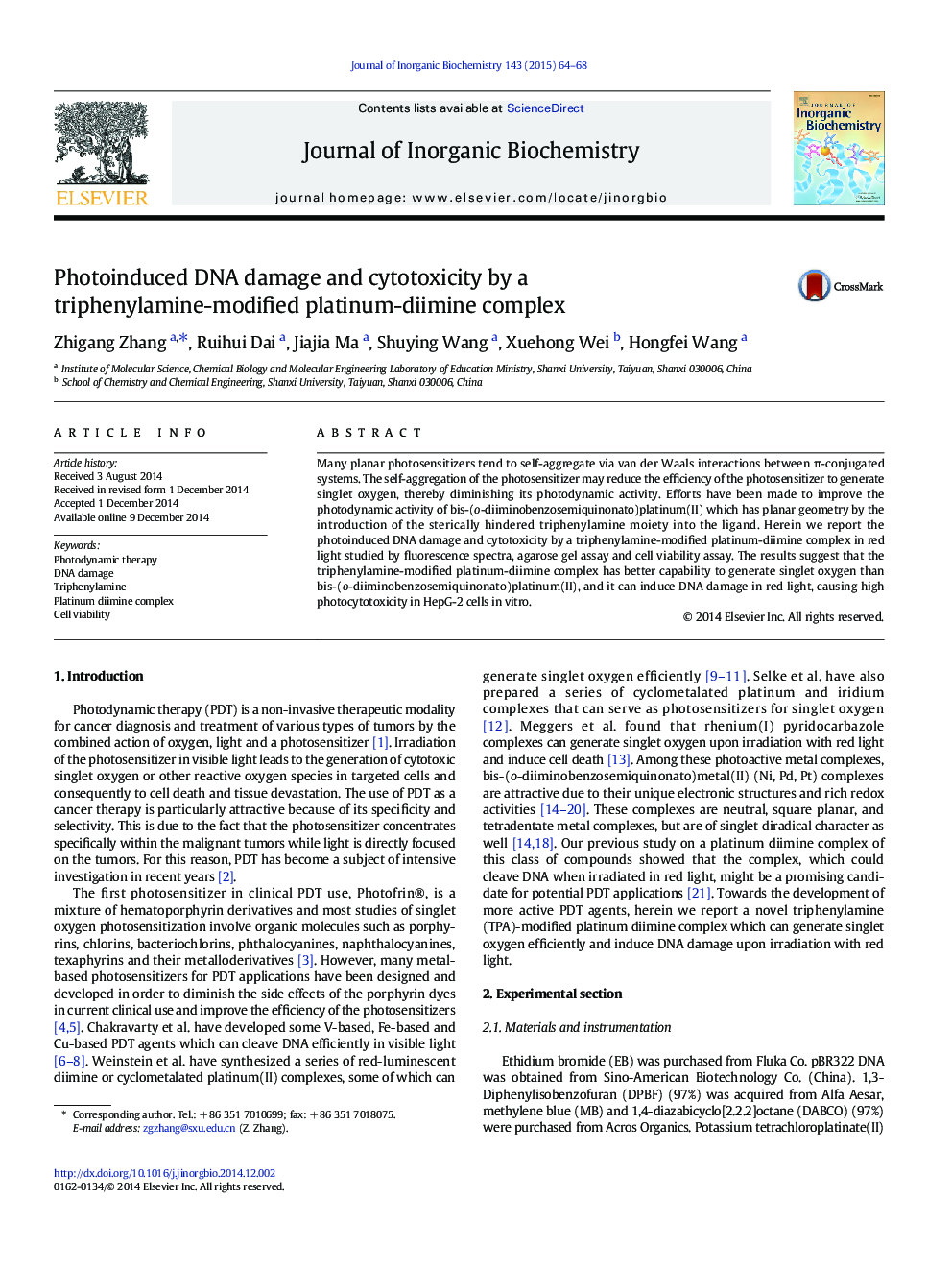| کد مقاله | کد نشریه | سال انتشار | مقاله انگلیسی | نسخه تمام متن |
|---|---|---|---|---|
| 1316563 | 1499444 | 2015 | 5 صفحه PDF | دانلود رایگان |

• The triphenylamine-modified platinum diimine complex can generate singlet oxygen efficiently.
• DNA damage induced by the complex in red light results from the production of singlet oxygen.
• The complex has high photocytotoxicity in HepG-2 cells.
Many planar photosensitizers tend to self-aggregate via van der Waals interactions between π-conjugated systems. The self-aggregation of the photosensitizer may reduce the efficiency of the photosensitizer to generate singlet oxygen, thereby diminishing its photodynamic activity. Efforts have been made to improve the photodynamic activity of bis-(o-diiminobenzosemiquinonato)platinum(II) which has planar geometry by the introduction of the sterically hindered triphenylamine moiety into the ligand. Herein we report the photoinduced DNA damage and cytotoxicity by a triphenylamine-modified platinum-diimine complex in red light studied by fluorescence spectra, agarose gel assay and cell viability assay. The results suggest that the triphenylamine-modified platinum-diimine complex has better capability to generate singlet oxygen than bis-(o-diiminobenzosemiquinonato)platinum(II), and it can induce DNA damage in red light, causing high photocytotoxicity in HepG-2 cells in vitro.
Photoinduced DNA damage and cytotoxicity by a triphenylamine-modified platinum-diimine complex have been studied by fluorescence spectra, agarose gel assay and cell viability assay. The results suggest that the complex can generate singlet oxygen efficiently and induce DNA damage in red light, causing high photocytotoxicity in HepG-2 cells in vitro.Figure optionsDownload as PowerPoint slide
Journal: Journal of Inorganic Biochemistry - Volume 143, February 2015, Pages 64–68